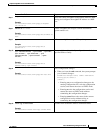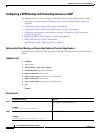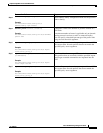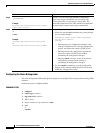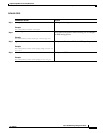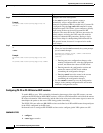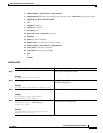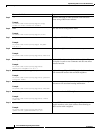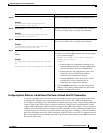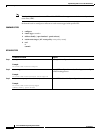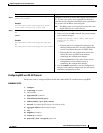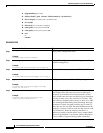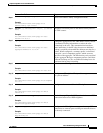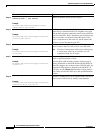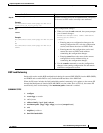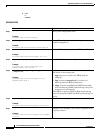
Implementing BGP on Cisco IOS XR Software
How to Implement BGP on Cisco IOS XR Software
RC-103
Cisco IOS XR Routing Configuration Guide
OL-14356-01
Configuring Route Reflector to Hold Routes That Have a Defined Set of RT Communities
A provider edge (PE) needs to hold the routes that match the import route targets (RTs) of the VPNs
configured on it. The PE router can discard all other VPNv4 (Cisco XR 12000 Series Router and
Cisco CRS-1) and VPNv6 (Cisco XR 12000 Series Router only) routes. But, a route reflector (RR) must
retain all VPNv4 and VPNv6 routes, because it might peer with PE routers and different PEs might
require different RT-tagged VPNv4 and VPNv6 routes (making RRs non-scalable). You can configure
an RR to only hold routes that have a defined set of RT communities. Also, a number of the RRs can be
configured to service a different set of VPNs (thereby achieving some scalability). A PE is then made to
peer with all RRs that service the VRFs configured on the PE. When a new VRF is configured with an
RT for which the PE does not already hold routes, the PE issues route refreshes to the RRs and retrieves
the relevant VPN routes.
Step 14
address-family {vpnv4 unicast | vpnv6 unicast}
Example:
RP/0/RP0/CPU0:router(config-bgp-nbr)#
address-family vpvn4 unicast
Enters VPN neighbor address family configuration mode.
Step 15
route-policy route-policy-name in
Example:
RP/0/RP0/CPU0:router(config-bgp-nbr-af)#
route-policy pe-pe-vpn-in in
Specifies a routing policy for an inbound route. The policy
can be used to filter routes or modify route attributes.
Step 16
route-policy route-policy-name out
Example:
RP/0/RP0/CPU0:router(config-bgp-nbr-af)#
route-policy pe-pe-vpn-out out
Specifies a routing policy for an outbound route. The policy
can be used to filter routes or modify route attributes.
Step 17
end
or
commit
Example:
RP/0/RP0/CPU0:router(config-bgp-nbr-af)# end
or
RP/0/RP0/CPU0:router(config-bgp-nbr-af)# commit
Saves configuration changes.
• When you issue the end command, the system prompts
you to commit changes:
Uncommitted changes found, commit them before
exiting(yes/no/cancel)?
[cancel]:
–
Entering yes saves configuration changes to the
running configuration file, exits the configuration
session, and returns the router to EXEC mode.
–
Entering no exits the configuration session and
returns the router to EXEC mode without
committing the configuration changes.
–
Entering cancel leaves the router in the current
configuration session without exiting or
committing the configuration changes.
• Use the commit command to save the configuration
changes to the running configuration file and remain
within the configuration session.
Command or Action Purpose



